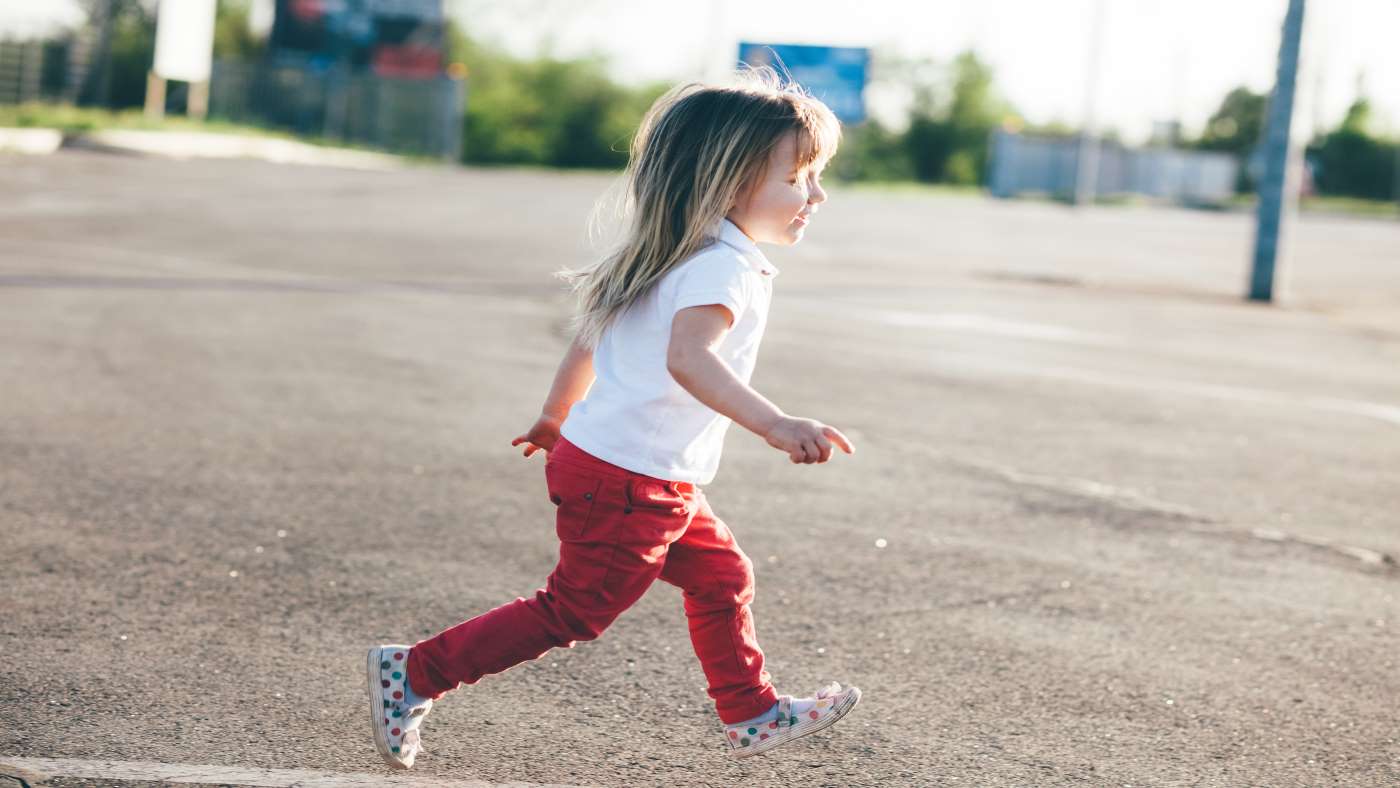Walking the line – how a wobble helps develops balance

By following a line, your toddler is further fine tuning their walking skills. They are now exploring a more intricate style of walking that helps them improve their coordination and maintain balance.
Following a line, as with lots of other skills, has loads more going on than first meets the eye!
When we walk, our eyes play a huge part in guiding where we place our feet. Following a line shifts the focus of the eyes from looking ahead (or absolutely everywhere in the case of most toddlers!) to looking directly at the ground in-front of them.
Children need to know where their feet are to be able to stay on and follow that line.
Keeping steady is a tricky process as it requires control over many muscles and joints, and even when they follow a line on the floor, it can feel quite precarious.
Your toddler may wobble, and sometimes fall, so you might need to stay as close to them as you can.
Wobbling stems from feeling unbalanced. To gain control of balance, your toddler receives sensory input from their visual, proprioceptive (sense of body) and vestibular systems (balance), and their senses work in harmony to give them a better feeling of how to stay remain stable.
Interestingly, the ankles play a key part in retaining balance. They help keep the body upright and still by preventing it from swaying as much after each leg has moved.[1]
It's not only legs that help keep the body balanced – your toddler also uses lots of different body parts to keep them upright.
While they’re trying to keep their body balanced, your toddler may hold out their arms to support them.
They’ll also rely on sensory feedback to help adjust the position of their head, shoulders and core.
Following a line develops postural reactions, which makes your toddler aware of how to save themselves when they start to wobble or topple over.
Your toddler learns through experience, and they will take a few tumbles here and there. Yet each time they fall, they learn more about saving themselves, like putting an arm out to help balance or to break their fall.
Balancing promotes the development of good concentration, which supports learning in all areas.
When concentration is improved, activities and tasks can be achieved over a longer period of time. This applies to all activities, which benefits learning as a whole.
So, the simple task of following a line branches out to encourage many developmental areas!
Reference:
[1] Goble, D. J., Coxon, J. P., Van Impe, A., Geurts, M., Doumas, M., Wenderoth, N., & Swinnen, S. P. (2011). Brain activity during ankle proprioceptive stimulation predicts balance performance in young and older adults. The Journal of neuroscience: the official journal of the Society for Neuroscience, 31(45), 16344–16352.